Function
| Bulb |
|
| Concave mirror |
|
| Condenser |
|
| Slide |
|
| Projector Lens |
|
| Image | The image produced is
|
| Bulb |
|
| Concave mirror |
|
| Condenser |
|
| Slide |
|
| Projector Lens |
|
| Image | The image produced is
|

| Convex lens | To focus the light of an object onto the film so that a sharp image can be produced. |
| Diaphragm | To control the size of the aperture and hence control the amount of light move into the camera. |
| Focusing Ring | To adjust the distance between the lens and the film so that the image is sharply focus on the film. |
| Film |
|
| Shutter | Open when picture is taken to allow light move onto the film. The shutter speed is the length of time when the shutter is open. It control the amount of light move onto the film. |
| Aperture | Open when picture is taken to allow light move onto the film. The shutter speed is the length of time when the shutter is open. It control the amount of light move onto the film. |
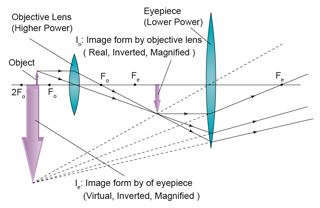
| Compound Microscope | |
| Object lens | Higher power |
| Eye lens | Lower power |
| Position of the object | The object is placed at a position between fo and 2fo. |
| Nature of the image, I1 | Real, inverted and magnified |
| Position of the image, I1. | The first image, I1 must be placed between the optical center of the eye lens with the eye lens principle focus point, fe. |
| Nature of the image, I2 | Virtual, inverted and magnified |
| Distance in between the two lens | The distance between the object lens and the eye lens in a compound microscope is bigger than the sum of the focal length (fo + fe). If the distance between both lenses are adjusted to less than (fo + fe), no image can be seen. |
| Magnification of the compound microscope. |
m1 = Linear magnification of the object lens |
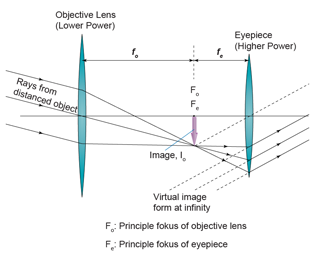
| Astronomical Telescope | |
| Objective lens | Lower power |
| Eye lens | Higher power |
| Position of the object | At infinity |
| Nature of the image, I1 | Real, inverted and magnified |
| Position of the image, I1. | At the principle focus of object lens, fo. |
| Nature of the image, I2 | Virtual, inverted and smaller in size. |
| Distance in between the two lens |
|
| Magnification of the compound microscope. |
|

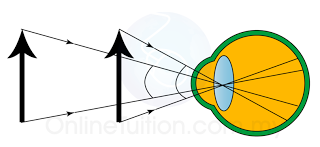
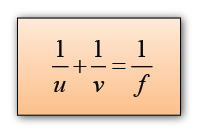
Positif
|
Negatif
|
|
u
|
Real object
|
Virtual object
|
v
|
Real image
|
Virtual image
|
f
|
Convex lens
|
Concave lens
|
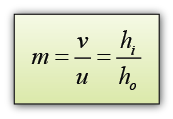
m = linear magnification
u = distance of object
v = distance of image
hi = heigth of image
ho = heigth of object
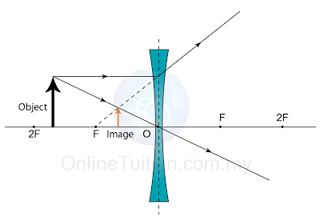
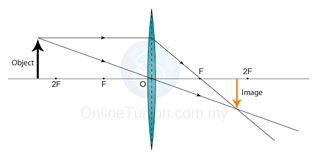
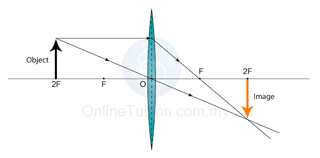
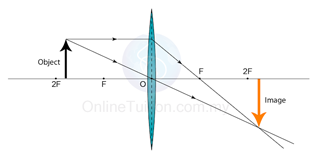
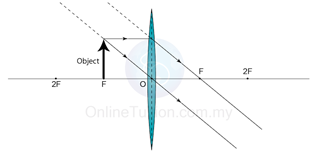

Characteristics of the Image: Virtual, uprigh, magnified
Position of image: at the same side of the object